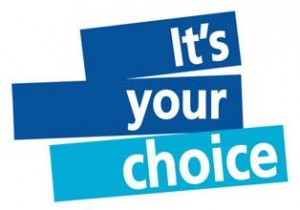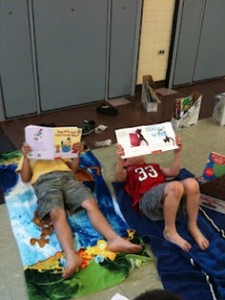Sharing Out
We educators and Teacher-Librarians can share what we’ve learned with our wider  communities of practices through both face to face and social media mediums. Obviously, blogging, tweeting, maintaining a website, participating in Google Plus communities and so on are a means of dissimulating information. As well, formal forums such as professional development workshops, conferences and networks are options as are informal hallway chats, staff / department head / committee meeting share outs, school inquiry clubs, etc.
communities of practices through both face to face and social media mediums. Obviously, blogging, tweeting, maintaining a website, participating in Google Plus communities and so on are a means of dissimulating information. As well, formal forums such as professional development workshops, conferences and networks are options as are informal hallway chats, staff / department head / committee meeting share outs, school inquiry clubs, etc.
Personalizing Learning
However, we can best respond to the needs of our staff, in their wide spectrum of  abilities and experiences, with the most appropriate and useful professional development by being responsive to their needs. One thing I have learned is that, as professionals, we are all at different places in our practice and our needs are highly individualized. A blanket approach is not effective. Just because I’m excited about something does not mean others are or should be. The most effective professional development is relevant to a professional’s personal learning goals and plan.
abilities and experiences, with the most appropriate and useful professional development by being responsive to their needs. One thing I have learned is that, as professionals, we are all at different places in our practice and our needs are highly individualized. A blanket approach is not effective. Just because I’m excited about something does not mean others are or should be. The most effective professional development is relevant to a professional’s personal learning goals and plan.
For example, in my role as a district curriculum coordinator, my team mate and I found the following tools and strategies successful (although we are still learning and revising!).
Tools & Strategies
A district hosted blog: We use this blog for regular updates on hot topics and learning  opportunities. As well, teachers can access information on district, provincial and global resources and better understand our coordinator role and how they can make use of us.
opportunities. As well, teachers can access information on district, provincial and global resources and better understand our coordinator role and how they can make use of us.
A resource wiki: As common questions and interests emerge, Dawn and I create a wiki page on our resource wiki. Each wiki page offers a brief definition in layman’s terms, a short instructional video and a resource area anyone can contribute to. This way, not only is this information now available to all, but it allows teachers to choose and access information and resources that are relevant to them when it best suits them from any location (anywhere, anytime, anyplace). As well, teachers can share resources directly with each other.
“Book Us” Mondays: Teachers can book Dawn and I through a wiki to come into their school on a Monday afternoon to work with them on anything they wish. Aaron, this sounds exactly like your “sandbox” approach. We provide release time for two teachers, encourage the principal to match this funding for two more and are welcoming of any teachers free to join (non-enrolling, on prep, etc.). When we arrive, we first co-create an agenda 100% based on the teachers’ needs and interests and work through the items as a team.
Pay It Forward: Teachers can apply for an afternoon of release anytime to collaborate with a colleague or colleagues. Dawn and I share a 1.0 FTE coordinator role which, I can promise you, is not enough to meet the diverse ITC needs of all the teachers (K to 12 / all subjects) in our district. In addition, we are not experts on every technology, past, present and emerging. Consequently, we have found it effective to match teachers with mentor teachers according to interest and request. For example, a grade 3 teacher who has been exploring how to use iPods on visual wilderness scavenger hunts (i.e. take pictures, return and investigate) knows more about this than I, as a secondary teacher, do and will be much more helpful to an elementary teacher interested in doing the same. All we ask is that any resources be shared on the Resource Wiki so other teachers can use them and that the mentee be open to mentoring someone themselves should the opportunity arise (with release time provided of course).
Technology Taste Tester: Dawn and I often hear from teachers that they feel they don’t know enough of the technology options available to be able to make an informed choice as to what to pursue for their own professional development. We have found it useful to first survey teachers through Fluid Survey and school wide networks in May or June to better understand what teachers are interested in. In October, we then offer a series of mini introductory sessions based on the prior information for up to 8 topics in one day. Similar to a mini Tapestry, teachers could sign up for up to 4 mini sessions in the day or just attend one or two, according to their needs and interests. From this point, teachers can make a more informed choice as to what they wish to focus on in their practice for the school year.
To Conclude . . .
I think what is most important is that professional learning opportunities be responsive  to teachers’ needs and that there be many ways for teachers to access resources and support. Different people will be interested in different things at different times. As well, everyone has a different learning style which demands diversity in potential learning experiences: online, small group, one-on-one, large group, video, book, etc. We know all learners are unique. To support teacher learning, we must first honor them as learners. I’m excited to see teacher inquiry mirror what we know about student inquiry.
to teachers’ needs and that there be many ways for teachers to access resources and support. Different people will be interested in different things at different times. As well, everyone has a different learning style which demands diversity in potential learning experiences: online, small group, one-on-one, large group, video, book, etc. We know all learners are unique. To support teacher learning, we must first honor them as learners. I’m excited to see teacher inquiry mirror what we know about student inquiry.









